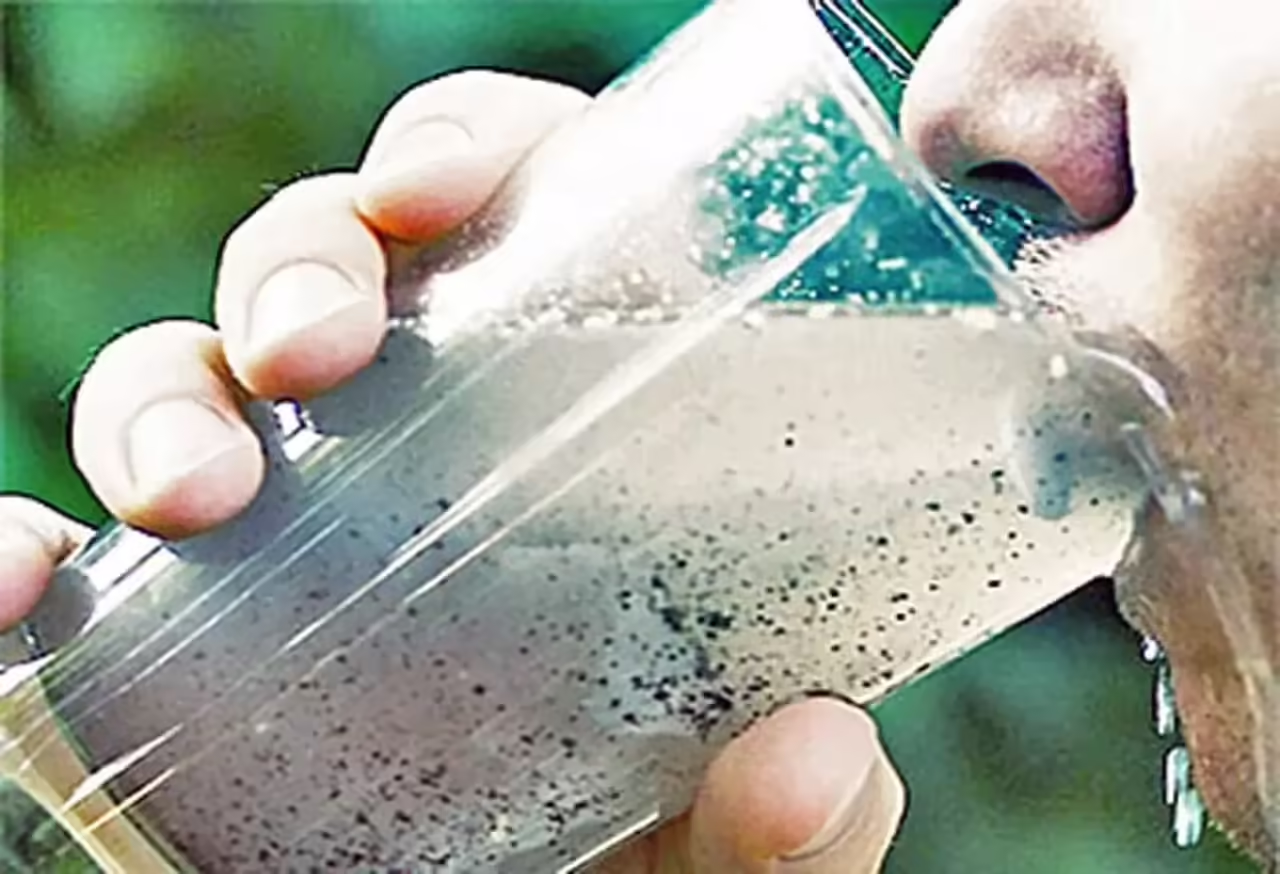
The human being is 75% water; therefore, the liquid represents the most important element for the organism. Several analyses have shown that depending on the quality of water, the quality of health depends on the quality of water. Just as it carries vitality and minerals, it can also harbor millions of dangerous bacteria and viruses. Here are the diseases caused when water is contaminated:
Diarrhea
When several protozoa, viruses and bacteria gather in the water, the most certain thing is that whoever drinks it in these conditions, will suffer as first symptoms a terrible diarrhea. It may begin with the presence of feces tending to the liquid state, which dehydrates the body and if it is chronic, it can lead to death. Surprisingly, almost 2 million people die every year in the world because of this disease.
Poisoning
Different types of poisoning can occur, but mainly due to the action of mercury and arsenic. Several countries have problems with their water supply because these harmful elements keep it contaminated. The work of the vast majority of multinational mining companies results in very serious damage to the vital liquid, such as those that extract gold, coal and oil, among others. The effects can be seen in skin, stomach and lung cancer and severe damage to the kidneys and bladder.
Cholera
It is a disease that has set off the alarms of the World Health Organization, since the number of dead and affected people seems to be increasing in more than fifty countries, worsening into almost uncontrollable epidemics. It is a strong diarrheal pathology that can kill an individual in just a few hours. It can be initiated by drinking tap water.
Fluorosis
A tremendous problem facing much of the world’s population is the fluoridation of water by governments, as reported by some independent research media. According to conspiracy theories, they add sodium fluoride to water that is normally sold in plastic bottles and in the direct tap supply, in order to alter people’s bodies and IQs, as well as to create lesions in the pineal gland and areas of the brain. It is already more than proven that sodium fluoride is a lethal poison for humans.
Dracunculiasis
This pathology arises when larvae of the so-called dracunculus medinensis are consumed, bacteria that cause serious infections, since inside the body, the larvae grow and develop as parasitic worms that bite the skin from the inside, leaving blisters and painful wounds as a consequence, when they try to leave the body, either by a foot, a leg or wherever they can.
Intestinal parasites
They are also called “helminths”, whose food is the organism they contaminated, while they multiply and grow stronger. Affected people reached this point by having consumed something contaminated with human fecal material or very dirty food. In children, it can noticeably affect development and growth, causing severe stomach pains, anemia and other diseases.
Trachoma
Produced by unhygienic food or water containing the bacterium Chlamydia trachomatis, it is capable of causing blindness. Most seriously, it is highly contagious and has been spreading throughout the world, especially in rural areas.
Typhoid fever
The causative bacterium is Salmonella typhi, which can cause high fevers, diarrhea, gastroenteitis, rashes and other symptoms. Fever may exceed 40 degrees and become continuous. It has caused hundreds of thousands of deaths, especially among children in developing countries.
Gastrointestinal diseases
Consumption of water contaminated with bacteria such as Escherichia coli, Salmonella or Shigella, or viruses such as norovirus, can cause gastrointestinal infections that can manifest as diarrhea, nausea, vomiting and abdominal pain. These infections can be especially serious in people with weakened immune systems, such as young children, the elderly and people with chronic illnesses.
Neurological problems
Some pollutants, such as mercury, can damage the nervous system and affect memory, balance and coordination. Mercury can also cause brain damage and increase the risk of neurodegenerative diseases such as Parkinson’s and Alzheimer’s.
Cardiovascular problems
Lead is a common contaminant in water that can cause damage to the cardiovascular system. Lead can increase blood pressure and the risk of heart disease and stroke. In addition, drinking water contaminated with chemicals such as chloroform and trihalomethane can increase the risk of heart disease and other cardiovascular problems.
Reproductive problems
Consumption of water contaminated with toxic chemicals such as lead, mercury and persistent organic compounds (POPs) can affect fertility and cause fetal development problems. For example, lead can damage sperm and reduce fertility, while POPs can interfere with hormone development and increase the risk of reproductive and infant health problems.
Respiratory problems
Drinking water contaminated with toxic substances such as chlorine and industrial chemicals can irritate the airways and cause respiratory problems such as asthma, bronchitis and respiratory allergies.
Skin problems
Consumption of water contaminated with bacteria, viruses and other microorganisms can cause skin infections, such as dermatitis and cellulitis, as well as allergic reactions. In addition, contact with contaminated water containing toxic chemicals can irritate the skin and cause skin rashes.
Hormonal problems
Drinking water contaminated with endocrine disrupting compounds (EDCs), such as chemicals used in personal care and cleaning products, can alter hormone production and increase the risk of problems such as decreased fertility, breast cancer and prostate cancer.
Liver and kidney problems
Drinking water contaminated with heavy metals such as lead and mercury can cause liver and kidney damage, which can lead to problems such as kidney and liver failure.
Musculoskeletal problems
Drinking water contaminated with toxic chemicals such as arsenic can cause damage to bones and muscles, which can lead to problems such as osteoporosis and muscle weakness.
If the life-giving liquid is contaminated, everything else is bad
Water is essential for life and is the most valuable resource on the planet. However, water pollution has become a global problem that endangers human health and the environment. Water pollution can come from human sources, such as agriculture, industry, and waste disposal, and natural sources, such as environmental disasters and soil erosion.
Contaminated water can contain a variety of toxic substances, such as heavy metals, bacteria, viruses, chemicals and endocrine disrupting compounds (EDCs). These contaminants can have serious effects on human health and the environment. For example, consumption of water contaminated with heavy metals such as lead and mercury can cause damage to the nervous system and vital organs such as the liver and kidneys. In addition, consumption of water contaminated with endocrine disrupting compounds can alter hormone production and increase the risk of diseases such as cancer and infertility.
Water contamination can also have negative effects on the environment, such as the death of fish and other aquatic life and contamination of soils and crops. Therefore, it is important to take measures to protect water and reduce pollution.
To address the problem of water pollution, a comprehensive approach involving communities, businesses, and governments is needed. This includes implementing policies and regulations that limit the release of pollutants into water, improving infrastructure to treat and remove pollutants from water, and raising awareness and education about the importance of protecting water.
In addition, innovative technologies, such as filtration and disinfection, can help ensure that water is safe for human consumption. Scientific research is also key to developing new methods to detect and remove contaminants from water.
It is important that water quality is constantly monitored to detect and prevent contamination. This can be done by government agencies, non-governmental organizations, and independent scientists. Monitoring includes taking water samples and conducting analyses to detect the presence of contaminants and determine their concentration.
It is also crucial to involve communities in the water protection process. People can learn about the negative effects of water pollution and how to prevent it, and they can be encouraged to take measures to protect water, such as reducing the use of chemicals and reusing and recycling water.
In addition, it is important that research be conducted on the toxicity and long-term effects of water pollutants. Often, the negative effects of water pollution do not become apparent until long after exposure. Therefore, it is important to conduct long-term studies to determine the long-term effects of water pollution on human health and the environment.
Another important aspect is international collaboration to address the problem of water pollution. Water pollution does not respect borders and can have worldwide effects. Therefore, international agreements are needed to protect water and ensure its availability for all.
When someone dies from drinking toxic water
The process a person goes through when dying after drinking heavily contaminated water is a tragic and painful event that can have serious health consequences. Water contamination can occur for a variety of reasons, including chemical contamination, biological contamination and thermal contamination.
When a person consumes contaminated water, contaminants can enter the body through the digestive tract. Once in the body, these contaminants can cause a range of negative effects, depending on the nature and amount of the contaminant. For example, chemical contaminants can damage internal organs, including the liver, kidneys and nervous system, while biological contaminants can cause infectious diseases.
After consuming contaminated water, the first symptoms may appear within a few hours or days. These symptoms may include nausea, vomiting, diarrhea, fever, headaches and fatigue. If contamination is severe, symptoms may worsen rapidly and can lead to organ failure and eventually death.
Treatment of contaminated water poisoning depends on the nature and severity of the symptoms.
In some cases, organ transplantation may be necessary, and in other cases, it may be necessary to treat the infection with antibiotics. However, in severe cases, death may be inevitable.
In addition to seeking medical attention, here are some additional tips that may help a person who has drunk contaminated water:
Stay hydrated: Drinking clean, potable water is essential to maintain hydration and prevent dehydration.
Avoid drinking contaminated water: Do not drink water from unknown or suspect sources. Instead, opt for bottled or filtered water.
Follow medical advice: If you are prescribed treatment, it is important to follow the instructions of your family doctor or specialist.
Avoid sharing personal items: If you have drunk contaminated water, it is important to avoid sharing personal items such as cups, silverware or towels with others to prevent transmission of any contaminants.







